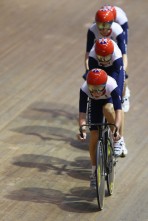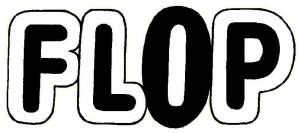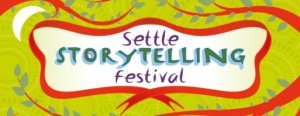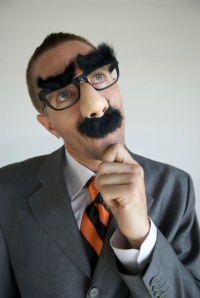 OK, the Olympics are here and I’m more excited than a roomful of Pointer Sisters. So here, for communicators, leaders and managers everywhere, are my top ten inspirations we can take from the Olympics. So please, spread the word, share this post and let’s inject some Olympic spirit into the workplace …
OK, the Olympics are here and I’m more excited than a roomful of Pointer Sisters. So here, for communicators, leaders and managers everywhere, are my top ten inspirations we can take from the Olympics. So please, spread the word, share this post and let’s inject some Olympic spirit into the workplace …
1. The Olympic motto – Faster, Higher, Stronger – means something. They are values that inspire. Why? Because (i) they are adjectives, (ii) they can be measured and (iii) they endure. Too many organisational values are bland nouns with no call to action and no “reason to get up in the morning” quality about them. When employees start tattooing their organisational values on their bodies, you know you’ve got something special!
2. The Olympics brings communities together. The torch relay has shown us the power of community and the inherent human search for meaning. I stood in the rain in Tatton Park for over an hour to see a bloke I’ve never met jog past me with an 800g aluminium flame-holder surrounded by bodyguards and a massive convoy of police, coaches and sponsored vehicles. Why would I do that? Of course, it’s  not what it is, it’s what it means. It’s what it symbolizes. And anything that can bring communities together like this has surely got to be a good thing. Our organisations are full of human beings searching for meaning and striving to belong. Remember, the best things in life are not things. They’re experiences.
not what it is, it’s what it means. It’s what it symbolizes. And anything that can bring communities together like this has surely got to be a good thing. Our organisations are full of human beings searching for meaning and striving to belong. Remember, the best things in life are not things. They’re experiences.
3. Athletes understand that performance is as much about the mind as the body. The ability to carry out the physical requirements of the job – the tasks – is only part of what makes an Olympian. The job title for a sprint hurdler is to run fast in straight line and jump over some sticks. The real work though goes on in the mind – the focus, the motivation, the concentration, the dedication, the commitment, the relentless pursuit of excellence, the confidence, the sense of occasion. For athletes, high performance is a whole-body and whole-brain concept. As it should be at work.
4. The Olympics is a triumph of diversity. I don’t just mean racial, religious and physical diversity, I mean the diversity of sports. Ever since the industrial revolution and Adam Smith’s theories about the division of labour, we have become obsessed with pigeon-holing people into jobs, roles and professions. We tend to stay stuck in one occupational sector most of our lives and we focus on becoming a ‘high achiever’ in one area rather than a ‘wide achiever’ in many. Not only does sport celebrate the concept of a multi-discipline approach (decathlon, heptathlon, modern pentathlon, triathlon etc) but the Olympics exposes us to sports we would never normally engage with. It’s a time for learning new skills, expanding our minds and gaining new experiences. So if you work in Marketing, reach out to your colleagues in Accounts.
 5. Sporting metaphors work. Whether you’re stepping up to the plate, raising the bar, passing the baton or punching above your weight, you can’t deny that sporting metaphors work. According to prominent linguist George Lakoff, metaphors are key to understanding and reasoning. “Human thought processes are largely metaphorical”, he said. So in business, using metaphor and storytelling to convey a complex message is a powerful way to communicate. The Olympics provides us with metaphors and stories in spades. So, on your marks …
5. Sporting metaphors work. Whether you’re stepping up to the plate, raising the bar, passing the baton or punching above your weight, you can’t deny that sporting metaphors work. According to prominent linguist George Lakoff, metaphors are key to understanding and reasoning. “Human thought processes are largely metaphorical”, he said. So in business, using metaphor and storytelling to convey a complex message is a powerful way to communicate. The Olympics provides us with metaphors and stories in spades. So, on your marks …
6. Cynics exist – get over it. Our workplaces reflect wider society, and in all walks of life there are people who are cynical, critical, indifferent or just plain grumpy. The Olympics brings out the best and the worst of human behaviour, particularly in terms of public perception. To some it’s a once-in-a-lifetime celebration of sport, endeavour and human spirit. To others it’s a commercialised, regionally-biased, elitist waste of money. Logos, mascots, ceremonies, slogans, designs, processes … they all incite opinions. So do strategies, corporate comms and change programmes. It’s a fact of life. Don’t let them get you down.
7. A communicator’s Aladdin’s Cave. Imagine the amount of information and data swirling around an Olympic Games. Twenty six sports, 300 events, 14,000 competitors, 20,000 media people, all with stories to tell and messages to get across. But do we complain about information overload? Of course not, we pick and choose the messages we want to engage with, and how we want to consume them. And what a choice we have! I’m a big believer in learning from other worlds, and the Olympics offers us communicators ideas and inspirations around every corner –the clarity of symbols, the importance of identity, the discipline of campaigns, the power of stories, the integration of channels, the layering of information, the opportunity for interaction, the thirst for education, the demand for speed, the need for accuracy. Watch, learn and steal with pride.
8. Sport is creative. If you look at sport as a ‘job of work’ like any other, you clearly see the importance of creativity and innovation to achieving high performance. Athletes are continually on the lookout for innovations that will make a difference. Some are legal (aero-dynamic cycling helmets), some are illegal (performance enhancing drugs) and some are controversial (hi-tech swimsuits). Gymnasts, divers and synchronised swimmers are actually judged on their creativity. Training regimes, diets, equipment, scoring systems, venues and techniques are continually reviewed and improved. There’s no such thing as business as usual in sport. In sport, as in business, it’s change agility and relentless creativity that makes winners.
9. There’s nothing wrong with having fun. The Olympics is the ultimate playground but the office can be playful too. Anything which gets people playing, having fun and laughing has got to be a good thing. Play exercises the right side of our brain. It makes us more productive, it builds relationships, it breaks down barriers, it brings people together, it encourages competition and collaboration, it harnesses creativity, it MAKES PEOPLE HAPPY. From flicking paper clips into a cup to baking Olympic cup cakes, let’s use this opportunity to inject some play into our working lives.
10. It’s what you do that counts. Athletes, like organisations, are continually striving for competitive advantage. At the Olympics, being world class is not enough. The difference between success and failure can be a fraction of a second, a twitch on the start line, a pull of an oar, a wobble on the beam, a puff of air in the pool, a millimetre of sand, a subjective opinion of a judge. Four years of training can come down to what happens in ten seconds. Sport reminds us that whilst strategies, visions, business cases, presentations, briefings, PR messages, structures, policies, standards and operating models all have their place, it’s ultimately grit, boldness, sweat and human endeavour that makes the difference. Let’s finish with a quote from Goethe: “What you can do, or dream you can, begin it. Boldness has genius, power and magic in it.”
Enjoy the Olympics everyone.
 Ever since watching Sir Ken Robinson’s famous TED talk on how schools kill creativity, I’ve been determined not to let school get in the way of my daughter’s education. I love Sir Ken’s analogy of schools being industrial when they should be agricultural. Our school models, he says, are linear rather than organic. We teach children what to think, not how to think. We put them on a production line, feed them facts and test them to death to see how much they remember. Where’s the creativity in that? I once heard Michael Morpurgo talk about why he hated school. He said he was always told off for looking out the window. “But why”, he said, “that’s where the world is.” I came across this wonderful poem by education pioneer Loris Malaguzzi. I think it pretty much sums it up, but the uplifting finale provides inspiration to all of us.
Ever since watching Sir Ken Robinson’s famous TED talk on how schools kill creativity, I’ve been determined not to let school get in the way of my daughter’s education. I love Sir Ken’s analogy of schools being industrial when they should be agricultural. Our school models, he says, are linear rather than organic. We teach children what to think, not how to think. We put them on a production line, feed them facts and test them to death to see how much they remember. Where’s the creativity in that? I once heard Michael Morpurgo talk about why he hated school. He said he was always told off for looking out the window. “But why”, he said, “that’s where the world is.” I came across this wonderful poem by education pioneer Loris Malaguzzi. I think it pretty much sums it up, but the uplifting finale provides inspiration to all of us. One of my favourite creativity techniques is conceptual blending, or synthesis. It simply involves taking random or unconnected objects/words/topics and blending them together to form new ideas. Almost every idea or invention is a blend of, or an inspiration from, an existing idea. Our ancestors would have invented fire after observing lighting strikes. DaVinci combined the wheel and the horse to sketch a prototype bicycle. Gutenberg invented the printing press after visiting a vineyard and seeing how the crushed black grapes left imprints on the wine press. The man who invented the typewriter (Christopher Sholes) was inspired by watching a pianist. If each key on a piano could play a different note, he wondered, then why can’t I produce keys that each stamp a different letter?
One of my favourite creativity techniques is conceptual blending, or synthesis. It simply involves taking random or unconnected objects/words/topics and blending them together to form new ideas. Almost every idea or invention is a blend of, or an inspiration from, an existing idea. Our ancestors would have invented fire after observing lighting strikes. DaVinci combined the wheel and the horse to sketch a prototype bicycle. Gutenberg invented the printing press after visiting a vineyard and seeing how the crushed black grapes left imprints on the wine press. The man who invented the typewriter (Christopher Sholes) was inspired by watching a pianist. If each key on a piano could play a different note, he wondered, then why can’t I produce keys that each stamp a different letter? Henry Ford once said “if you think you’re not creative, you’re not”. Creativity isn’t natural born or God-given. It’s not in the exclusive gift of painters, writers, graphic designers and those in the performing arts.
Henry Ford once said “if you think you’re not creative, you’re not”. Creativity isn’t natural born or God-given. It’s not in the exclusive gift of painters, writers, graphic designers and those in the performing arts. 



 What’s the best project team you’ve ever worked in? Not the best project, but the best project
What’s the best project team you’ve ever worked in? Not the best project, but the best project 
 I walked past my local pub this morning after dropping the car off for an MOT. Outside the pub was a board advertising an “icons & innovations beer festival”. When I got home, some tickets had arrived for next month’s Hay Literature Festival. I then booked a hotel for a quick few days at the Cheltenham Science Festival and while I was doing that I had an email about this year’s Just So Festival – a wonderful weekend of creativity for children in August. We really are becoming a nation of festival goers. And I haven’t even mentioned the hundreds of music and food festivals you could pick and choose from this summer. Anyone for the East Anglian Guitar Festival? Or the Cornwall Asparagus Festival? Or the Settle Storytelling Festival?
I walked past my local pub this morning after dropping the car off for an MOT. Outside the pub was a board advertising an “icons & innovations beer festival”. When I got home, some tickets had arrived for next month’s Hay Literature Festival. I then booked a hotel for a quick few days at the Cheltenham Science Festival and while I was doing that I had an email about this year’s Just So Festival – a wonderful weekend of creativity for children in August. We really are becoming a nation of festival goers. And I haven’t even mentioned the hundreds of music and food festivals you could pick and choose from this summer. Anyone for the East Anglian Guitar Festival? Or the Cornwall Asparagus Festival? Or the Settle Storytelling Festival?![60seconds[1]](https://creativecommunicator.files.wordpress.com/2013/03/60seconds1.jpg?w=300&h=136) This weekend at Manchester Museum, researchers from the University of Manchester gave one-minute microlectures to the public on the subject of biomedical research. The ‘Manchester Minute Microlectures’ event challenged the researchers to explain aspects of their work in just 60 seconds, followed by tea, cake and questions. It was a real eye-opening event (part of a day of family activities at the museum on the subject of the human body) and a great way to gain insight into an area of science most of us wouldn’t normally be exposed to. The challenge for the speakers of course was to crystallize their message and ‘sell’ their research to an audience of people from eight to eighty years old with no knowledge of the subject whatsoever….. in just one minute.
This weekend at Manchester Museum, researchers from the University of Manchester gave one-minute microlectures to the public on the subject of biomedical research. The ‘Manchester Minute Microlectures’ event challenged the researchers to explain aspects of their work in just 60 seconds, followed by tea, cake and questions. It was a real eye-opening event (part of a day of family activities at the museum on the subject of the human body) and a great way to gain insight into an area of science most of us wouldn’t normally be exposed to. The challenge for the speakers of course was to crystallize their message and ‘sell’ their research to an audience of people from eight to eighty years old with no knowledge of the subject whatsoever….. in just one minute. A few days ago I ran a short workshop for the Institute of Internal Communications in Leeds called ‘unleash your creativity in two hours.’ It turned out to be a really enjoyable session, with a great group of people and some fabulous ideas. In the opening few minutes of my workshop I asserted that everyone has it in them to be creative at work – creativity is not the exclusive domain of those of us who ‘create’ a tangible output like a piece of writing or design. The accounts clerk tapping numbers into a PC all day is just as creative if he/she comes up with an idea to alter a business process to improve efficiency. We then talked a little about how the human brain works – with its 86 billion cells and one quadrillion nerve connections – and how it both enables and stifles creativity. These connections are the key to creativity. A newborn baby’s brain will form a million new connections every second. Every experience, memory, activity, thought and movement creates connections which are stored in the ‘database’ for future reference. For the most part, these connections keep us alive and make us who we are, but they can also make us (or our brain) lazy. The brain
A few days ago I ran a short workshop for the Institute of Internal Communications in Leeds called ‘unleash your creativity in two hours.’ It turned out to be a really enjoyable session, with a great group of people and some fabulous ideas. In the opening few minutes of my workshop I asserted that everyone has it in them to be creative at work – creativity is not the exclusive domain of those of us who ‘create’ a tangible output like a piece of writing or design. The accounts clerk tapping numbers into a PC all day is just as creative if he/she comes up with an idea to alter a business process to improve efficiency. We then talked a little about how the human brain works – with its 86 billion cells and one quadrillion nerve connections – and how it both enables and stifles creativity. These connections are the key to creativity. A newborn baby’s brain will form a million new connections every second. Every experience, memory, activity, thought and movement creates connections which are stored in the ‘database’ for future reference. For the most part, these connections keep us alive and make us who we are, but they can also make us (or our brain) lazy. The brain 
 A recent post on HBR warning about the unhealthy consequences of ‘sitting’ (in other words, the amount of time we spend on our backsides!) in the workplace and the healing and creative advantages of walking has got me thinking about how much good communication is lost by chair-based apathy.
A recent post on HBR warning about the unhealthy consequences of ‘sitting’ (in other words, the amount of time we spend on our backsides!) in the workplace and the healing and creative advantages of walking has got me thinking about how much good communication is lost by chair-based apathy.  Human beings are hardwired for optimism, and never is our tendency to look on the bright side more in evidence than when we’re approaching the start of a new year. For most of us, our success rate in living up to new year resolutions is pretty shocking, but every year we adamantly insist that the next 12 months will be different. It’s in our nature. So here, with a heaped tablespoon of positivity, I present ten new year resolutions for internal communicators everywhere …
Human beings are hardwired for optimism, and never is our tendency to look on the bright side more in evidence than when we’re approaching the start of a new year. For most of us, our success rate in living up to new year resolutions is pretty shocking, but every year we adamantly insist that the next 12 months will be different. It’s in our nature. So here, with a heaped tablespoon of positivity, I present ten new year resolutions for internal communicators everywhere …















